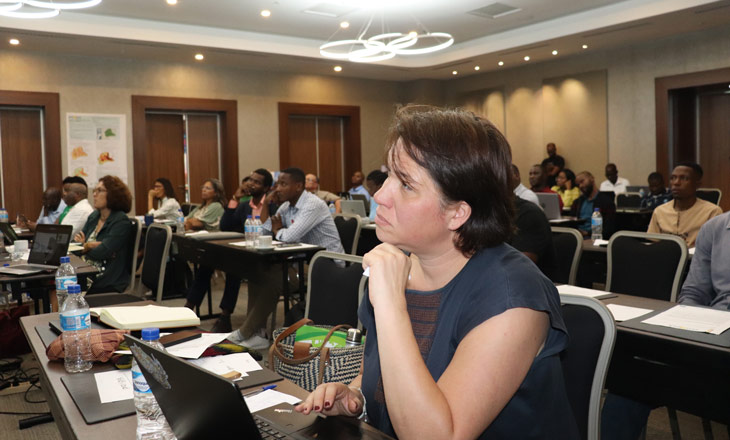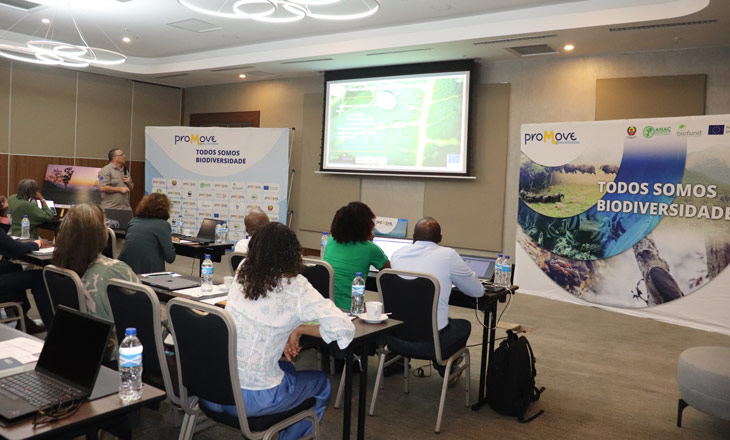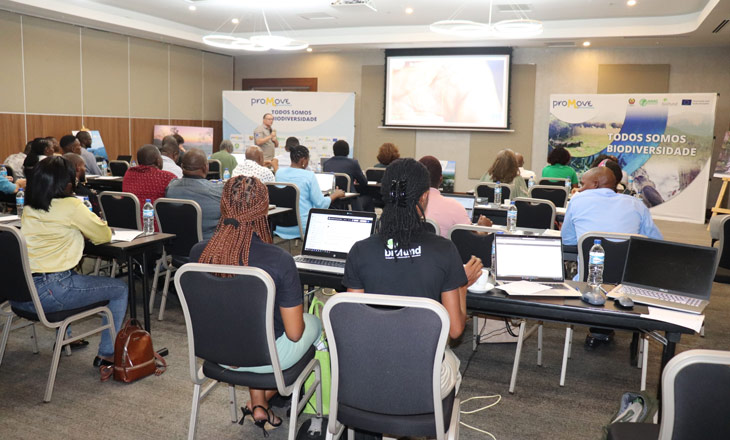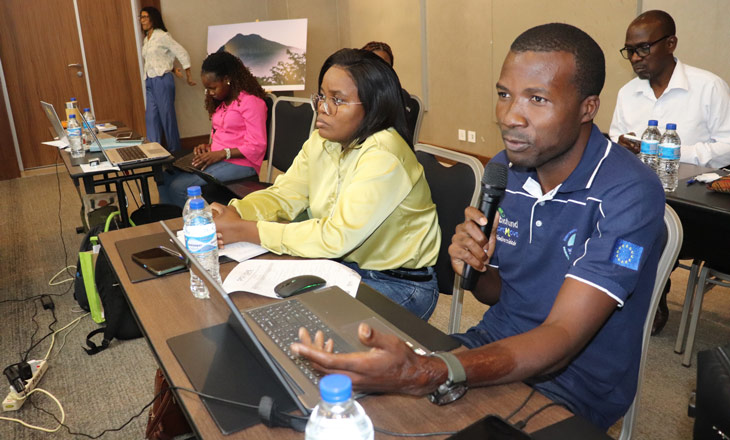These are the results of applied research promoted by the PROMOVE Biodiversidade Programme, funded by the European Union, carried out in Gilé National Park (PNAG) and Mount Mabu, and presented at the seminar organized by the Foundation for the Conservation of Biodiversity – BIOFUND and partners, on February 21, in the City of Maputo.
Published at 06/03/2025
PROMOVE Biodiversidade: Results of Studies Conducted in PNAG and Mount Mabu Highlight the Importance of Research for Conservation
The event was attended by about 63 participants, including representatives of the European Union, the National Administration of Conservation Areas (ANAC) and other Directorates of the Ministry of Agriculture, Environment and Fisheries – MAAP, Gilé National Park – PNAG, Mount Mabu, the Environmental Protection Area of the Primeiras and Segundas Islands (APAIPS), the National Institute of Statistics (INE), and Academia. The objective was to disseminate the results of five scientific studies and their implications to the management of PNAG and Mount Mabu. The studies addressed crucial topics for the conservation and sustainable management of these conservation areas:
- Fire and its Effect on the Ecology of PNAG and Implications for Park Management, carried out by Eduardo Mondlane University, Faculty of Agronony and Forestry Engineering – UEM/FAEF;
- Large Mammals of PNAG: Conservation Status and Impact of Reintroduction on Ecological Restoration, carried out by UniLúrio;
- Relationship between the Population of the Buffer Zone of PNAG, Use of Natural Resources and Some Demographic Projections, carried out by the Catholic University of Mozambique – UCM;
- Study of the Hydrological Potential of Mount Mabu, carried out by the National Institute of Irrigation in collaboration with UEM/FAEF – INIR and FAEF;
- Results of Scientific Expeditions, carried out by the WWF-ReGeCom-RADEZA consortium.
Among the results presented, there is an indication that about 60% of the park’s total area is affected annually by intense and severe fire, associated with the prevalence of poaching inside the park. Nonetheless, fire-resistant species continue to dominate in high-severity areas.
Miombo species continue to dominate the vegetation regardless of the severity of the fire. In areas of higher severity, fire-resistant species were less affected, but the ecosystem structure was impacted by the severity, resulting in a significant reduction in natural regeneration. These results motivated the organization of training on fire management for local communities, park staff, and local government. Furthermore, it was recommended to conduct an analysis on the effect of fire on beekeeping flora, its flowering, bee populations, and beekeeping productivity, which is an important value chain in the region.
Also, in PNAG, UniLúrio’s research found the absence of large carnivores and indicated growth in the population of medium and large herbivores in the last decade, creating favorable conditions and prey availability for predators.
Despite the absence of resident communities inside PNAG, it is essential to understand the population dynamics in the buffer zone, given its effect on the demand for goods and services such as biodiversity, pollination, hydrological resources, scenic landscape, and carbon sequestration provided by the Park. UCM’s study recorded an average population growth of 1.8% between 2023 and 2024 and a reduction in pregnancies among young mothers of ages 15–19 from 26% to 13%. Although the estimated average population growth is lower than census projections, it is necessary to monitor these indicators for effective PNAG management and community development.
Equally, for Mount Mabu, the studies reinforced the high value of biodiversity and the vulnerability of species to habitat degradation. Furthermore, the hydrological analysis identified around 17 watercourses of excellent quality, opening opportunities for the development of value chains linked to agriculture, aquaculture, beekeeping, fishing, hydroelectric energy production, mineral water extraction, among others.
For ANAC, the results of these studies promoted by the PROMOVE Biodiversidade programme make it possible to understand the current state of conservation in PNAG, document the biodiversity available in Mount Mabu, and identifies local needs for informed preparation of effective management plans, and eventually contribute to the formulation of public policies focused on biodiversity conservation.






